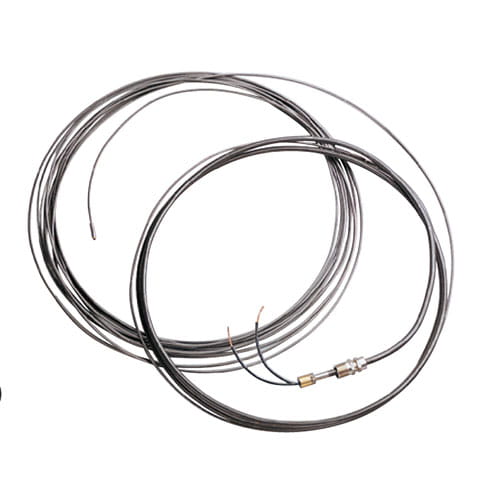Series constant watt cables ?
Series constant watt cables, also known as series resistance heating cables or series constant wattage heating cables, are designed to provide a fixed and consistent heat output over their entire length. Unlike parallel constant watt heating cables, series constant watt cables have a single resistive element that runs the entire length of the cable. Here’s a detailed overview of their operation, features, and applications

How Series Constant Watt Cables Work
- Construction: Series constant watt cables consist of a single resistive heating element, usually made of a metallic alloy, that extends the length of the cable. This element is enclosed within insulating materials and an outer protective jacket to ensure safety and durability.
- Constant Power Output: The resistive element is designed to provide a fixed amount of heat per unit length when an electric current passes through it. The resistance of the element remains relatively stable, ensuring a consistent heat output regardless of changes in ambient temperature.
Key Features
- Consistent Heating: Provides a uniform and consistent heat output along the entire length of the cable, making it suitable for applications requiring precise temperature control.
- Durability: Typically constructed with robust materials that can withstand harsh environmental conditions, including exposure to chemicals, moisture, and UV radiation.
- High Power Density: Capable of delivering significant heat output, making them ideal for demanding heating applications.
- Custom Lengths: Usually manufactured to specific lengths, as cutting them in the field is not feasible without altering their electrical characteristics.
Applications
- Process Temperature Maintenance: Commonly used in industrial settings to maintain consistent temperatures in pipelines, tanks, and vessels.
- Pipe Freeze Protection: Ensures pipes remain above freezing temperatures in cold environments, preventing freeze damage.
- Snow Melting Systems: Installed in outdoor surfaces like driveways, walkways, and stairs to melt snow and ice.
- Roof and Gutter De-Icing: Prevents ice dams and icicles by providing consistent heat to roofs and gutters.
- Floor Heating: Provides uniform heat in residential and commercial floor heating systems.
Advantages
- Uniform Heat Distribution: Ensures even heating across the entire length of the cable, crucial for applications needing consistent temperature maintenance.
- Reliability: The design ensures a stable and predictable heat output.
- High Power Output: Can deliver substantial heat, suitable for high-demand applications.
Considerations
- Fixed Lengths: Typically manufactured to predetermined lengths, so precise measurement and planning are required before installation.
- Energy Consumption: Provides constant power output, which may lead to higher energy consumption compared to self-regulating cables in some scenarios.
- Temperature Control: Often requires external temperature control devices (like thermostats or controllers) to prevent overheating and ensure safe operation.
Conclusion
Series constant watt heating cables are a reliable and efficient solution for applications that require uniform and consistent heating. Their ability to deliver a fixed amount of heat over their entire length makes them ideal for process temperature maintenance, pipe freeze protection, snow melting, roof and gutter de-icing, and floor heating. While they offer high power output and reliability, they also require careful planning regarding their lengths and might need external temperature controls to ensure safe operation.
